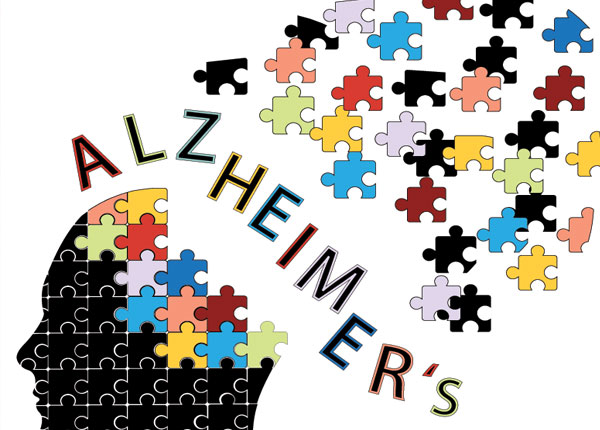Having the ability to detect diseases in their earliest stages of development is an invaluable therapeutic resource. For many diseases, the initial onset times are when they are most vulnerable and therefore respond best to intervention modalities. However, symptoms at preliminary stages often go unnoticed or are dismissed as minor annoyances, delaying treatment. Thus, scientists are continually on the hunt for new biomarkers that could assist them with early detection. Now, researchers at Sanford Burnham Prebys Medical Discovery Institute (SBP) may have just uncovered a peptide that could lead to the early detection of Alzheimer's disease (AD).
The SBP researchers—publishing their findings today in Nature Communications “Identification of a Peptide Recognizing Cerebrovascular Changes in Mouse Models of Alzheimer’s Disease”—believe their new results could provide a means of homing drugs to diseased areas of the brain to treat AD, Parkinson's disease, as well as glioblastoma, brain injuries, and stroke.
“Our goal was to find a new biomarker for AD,” explained co-lead study investigator Aman Mann, Ph.D., a research assistant professor at SBP. “We have identified a peptide (DAG) that recognizes a protein that is elevated in the brain blood vessels of AD mice and human patients. The DAG target, connective tissue growth factor (CTGF), appears in the AD brain before amyloid plaques, the pathological hallmark of AD.”
Dr. Aman Mann of the Sanford Burnham Prebys Medical Discovery Institute discusses a finding that may lead to earlier detection and treatment of Alzheimer's disease. [Kristen Cusato].
AD is currently ranked as the sixth leading cause of death in the United States, but recent estimates indicate that the disorder may rank third, just behind heart disease and cancer, as a cause of death for older people. Moreover, AD is the most common cause of dementia among older adults, with memory problems typically being one of the first signs of cognitive impairment.
In the current study, the investigators identified a cyclic peptide composed of nine amino acids, which they named DAG. The research team found that the peptide accumulated in the hippocampus of hAPP-J20 mice at different ages. Interestingly, when the SBP researchers intravenously injected the DAG peptide, they observed that it homes to the neurovascular unit of endothelial cells and to reactive astrocytes in mouse models of AD. Furthermore, they were able to identify that CTGF—a matricellular protein that is highly expressed in the brain of individuals with AD and in mouse models—was the target of the DAG peptide.
“Importantly, we showed that DAG binds to cells and brain from AD human patients in a CTGF-dependent manner,” Dr. Mann noted. “This is consistent with an earlier report of high CTGF expression in the brains of AD patients.”
![This image shows DAG (green-labeled peptide) targeting to the brain blood vessel (labeled red) in the hippocampus of the Alzheimer's brain. [Ruoslahti Lab, SBP]](https://genengnews.com/wp-content/uploads/2018/08/155637_web2512641222-1.jpg)
This image shows DAG (green-labeled peptide) targeting to the brain blood vessel (labeled red) in the hippocampus of the Alzheimer’s brain. [Ruoslahti Lab, SBP]
“Our findings show that endothelial cells, the cells that form the inner lining of blood vessels, bind our DAG peptide in the parts of the mouse brain affected by the disease,” added senior study investigator Erkki Ruoslahti, M.D., Ph.D., distinguished professor at SBP. “This is very significant because the endothelial cells are readily accessible for probes injected into the bloodstream, whereas other types of cells in the brain are behind a protective wall called the blood–brain barrier. The change in AD blood vessels gives us an opportunity to create a diagnostic method that can detect AD at the earliest stage possible.”
The scientists are hopeful that DAG could potentially be used as a tool to improve the delivery of drug or imaging agents to regions of vascular change and astrogliosis in diseases associated with neuroinflammation.
“But first we need to develop an imaging platform for the technology, using magnetic resonance imaging (MRI) or positron emission tomography (PET) scans to differentiate live AD mice from normal mice. Once that's done successfully, we can focus on humans,” Dr. Ruoslahti noted. “As our research progresses, we also foresee CTGF as a potential therapeutic target that is unrelated to amyloid-β (Aβ), the toxic protein that creates brain plaques. Given the number of failed clinical studies that have sought to treat AD patients by targeting Aβ, it's clear that treatments will need to be given earlier—before amyloid plaques appear—or have to target entirely different pathways.”
Dr. Ruoslahti concluded stating that “DAG has the potential to fill both roles—identifying at-risk individuals prior to overt signs of AD and targeted delivery of drugs to diseased areas of the brain. Perhaps CTGF itself can be a drug target in AD and other brain disorders linked to inflammation. We'll just have to learn more about its role in these diseases.”



